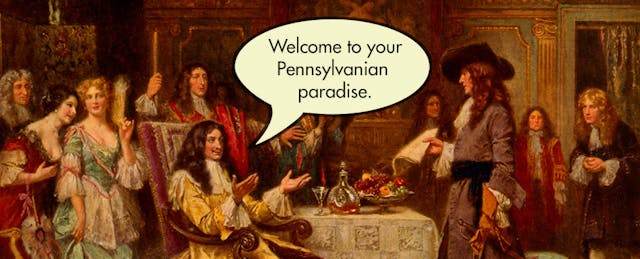Why do we travel? How do we choose a place to put down roots? What draws us there? Today, when we plan to travel or relocate, we do research. We find out about the climate, people, culture, and economy that we are about to dive into.
I wanted my students to experience that kind of research process, and to arrive at an answer relating the question of why people are drawn to places. After all, project-based learning should allow students to experience authentic processes while learning content. But I also wanted them to show their learning through a product that professionals typically publish: tourism commercials.
And so, that is what we did.
Step 1: Frame the Task
In our early North American colonies unit, students learned about the cultures and economies of the 17th century colonies. What was the draw? Why did Europeans take the risky trek across the volatile Atlantic Ocean to put down roots in a place so far away? It was time for my students to start investigating.
First, I showed the ninth graders real tourism advertisements I found on YouTube; they watched clever ads from across the continent in California and from their home turf in Massachusetts. Then we talked, in small groups and as a class, about what made each place attractive. Some of the items on the list had to do with the places themselves: lots to do, beautiful scenery, welcoming people, while other students mentioned aspects of the video production: bright colors, upbeat music, cheerful narrative script.
Step 2: Start the Research
Small groups of 2-3 students chose an early North American colony from New York in the North to Georgia in the South, and started digging for information about founding leadership, religion, economy, climate, and culture. Students used articles from our school subscription databases and books from the classroom and school libraries.
When students gathered their information in Evernote or Google Drive, they shared it with me for extra input and approval. Once I reviewed their work and pushed them deeper with some guiding questions, a real vision of their colonies became clearer.
Step 3: Pulling it Together
This next step is a great opportunity for interdisciplinary learning, for those teachers who are interested in it.
As students began writing their scripts, they were instructed to use what they learned about persuasive techniques from their English classes. My colleague Kate Crosby even pointed me toward a handy guide to the Aristotelian Appeals ethos, pathos, and logos they’d used in her freshman English class, making this a truly interdisciplinary endeavor. They also had to consider who their commercial might target: families? young men just starting out? the wealthy? the religious?
Once the script was crafted, students looked for images to represent their colony and used iMovie to put together their commercial and Airdrop to share it with me. Finally, I uploaded the videos to my YouTube channel, specifically created for student projects.
Step 4: Hosting a Viewing Party
Students showed their final commercials to one another in the classroom. No information was given to the audience prior to the screening, but while watching, other students were given varying information to look for: economy, culture, religion, leaders, and method of persuasion utilized. The audience told the creators what they learned from the video, and the creators confirmed or clarified the details.
Step 5: Reflect, Report, Publish
Any great project can’t be complete without reflection, so my students share their learning on blogs. The benefit of this medium is that the final work can be a mix of written expression illustrated with images and video clips.
- Kirsten’s post about her New Jersey ad is a great example. She wrote about the process we went through in class, what she learned about New Jersey, embedded her video, and concluded with an analysis of persuasive techniques employed.
- Olivia’s post on Georgia was also well put together and her group’s video production quality was perhaps the best of the class. See the video below.
This journey brought my students through required curriculum, but also gave them experience with the real process people must go through before traveling to a destination or developing marketing material. When real world skills are combined with rich content, the best of project-based learning happens.


